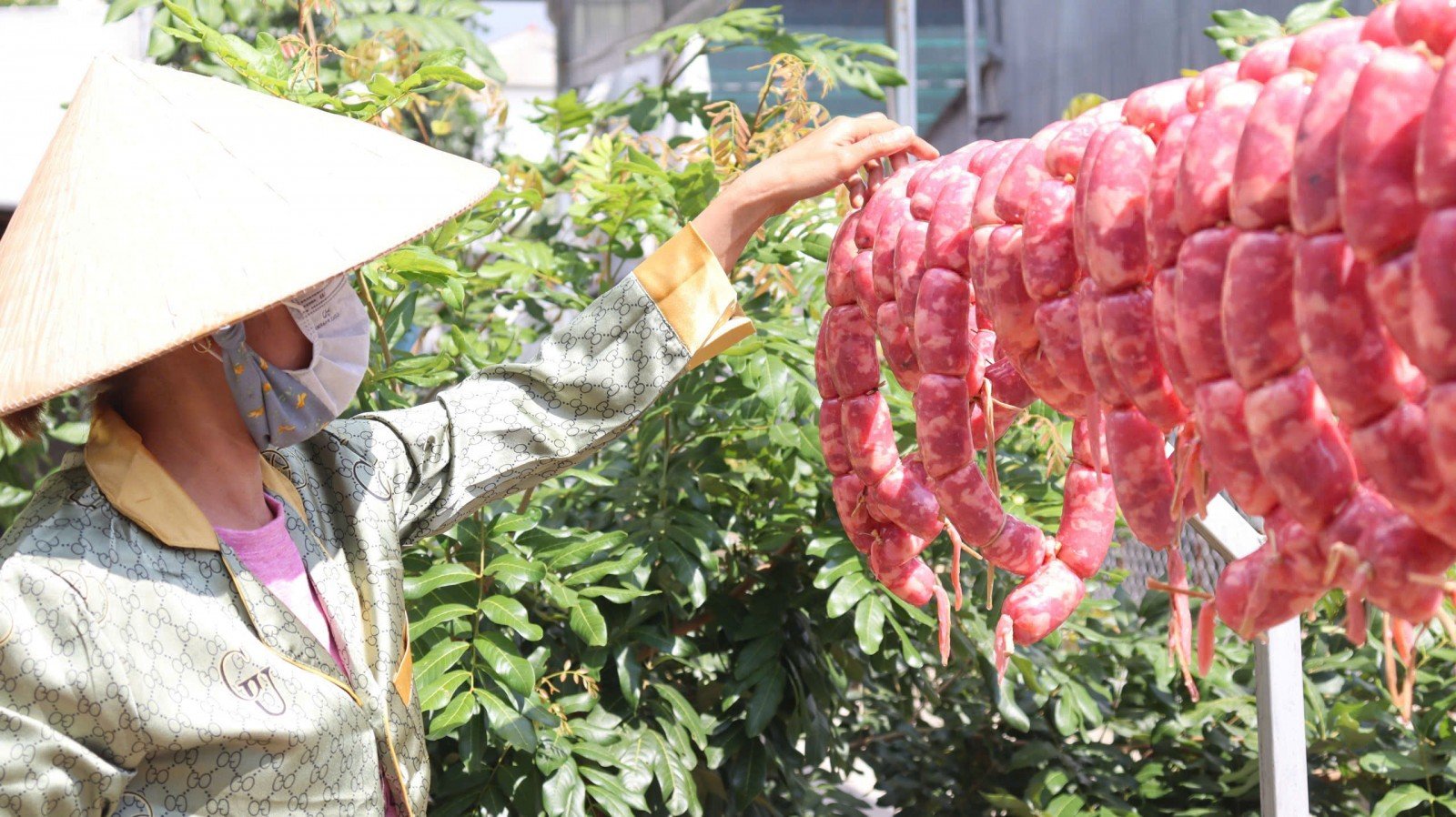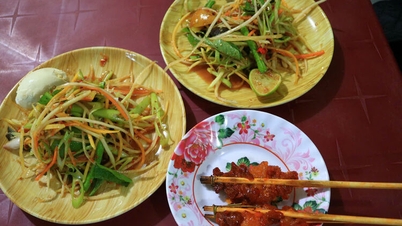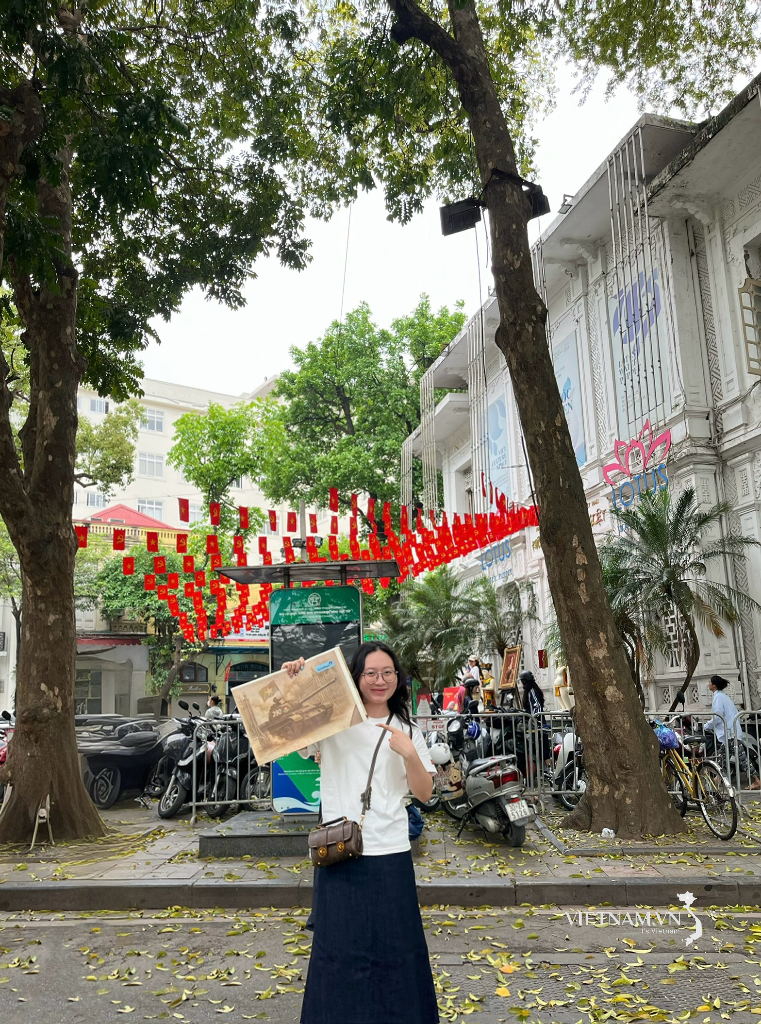
Drying the stove in the morning sun. Photo: DANG LAN
In Cham language, tung means intestines, lo mo means cow or also known as beef sausage. We stopped by Ali's family, residing in Phum Soai hamlet, Chau Phong commune, on the occasion when his family was making this specialty dish. Ali said: "The name tung lo mo is not only about the ingredients but also represents the unique culture of the Cham people. My grandparents told me that in the past, when life was still difficult, the Cham people often used every part of the cow to make food. Using the intestines to make sausage shows thrift and respect for what nature has given. At the same time, tung lo mo is also a dish associated with holidays and Tet, symbolizing the reunion and gathering of the community."
To prepare this specialty, it must go through many steps. The beef must be fresh, using only healthy, naturally grazed cows. With the outer skin layer, the Cham people use cow intestines. After cleaning the outside, the person who makes it turns the cow intestines inside out and continues to scrape and wash them. Both the outside and inside of the intestines are scraped with salt water, wine and ginger many times. Doing so ensures hygiene and removes the smell of the beef. After that, they tie one end tightly, inflate it with air, and dry it. This way, the intestines do not stick together during the drying process, and when the ingredients are put in, it is easier and can be preserved longer.
The selected ingredients are thigh meat, lean meat or boneless meat with the tendons removed and a little beef fat (or beef brisket) in a certain ratio, cut into cubes to easily put into the intestines. All ingredients will be mixed well with spices such as salt, MSG, garlic, pepper and some traditional ingredients of the Cham people... In the past, the Cham people did not add sugar, but to meet the demands of diners, now the makers have added a little sugar to enhance the rich flavor.
After preparing all the ingredients, the marinated beef will be stuffed into the cow intestine, tied into pieces, using a sharp object to puncture the tung lo mo to release the steam, then dried in the sun. Tung lo mo is only dried in the early morning sun and kept in the refrigerator. This product also has a sour type, the ingredients are the same as the non-sour type, but when marinating the meat, you have to mix in cold rice, leave it overnight to ferment and have a natural light sour taste.
There are many ways to enjoy tung lo mo such as steaming, frying or grilling, but grilling is still the most popular with diners (before grilling, boil it in fresh coconut water). Take the dried tung lo mo pieces, cut them into pieces and grill them on a charcoal stove. The sizzling sound of the fat oozing out makes the tung lo mo shiny, the smoke rising with the aroma of spices stimulates the taste buds, very attractive to diners. When enjoying the hot tung lo mo pieces on the charcoal stove, diners will feel the unique taste. The mild spiciness of pepper, the rich aroma blend together, or the unique sour taste of tung lo mo when eaten with coriander, basil and soy sauce is even more attractive.
Ali's family's Tung Lo Mo is handmade from start to finish, from ingredients to spices, the outer leather is also made from cow intestines, so the product still retains the family's traditional features through many generations.
Leaving the Cham family, but the unique flavor of this specialty still makes us linger. In addition to the dishes, we also admire the peaceful beauty of the river area, visit traditional craft villages, and immerse ourselves in the life of the Cham people along the gentle Hau River.
DANG LAN
Source: https://baoangiang.com.vn/thom-ngon-mon-tung-lo-mo-cua-dong-bao-cham-a466132.html







![[Photo] Opening of the 14th Conference of the 13th Party Central Committee](https://vphoto.vietnam.vn/thumb/1200x675/vietnam/resource/IMAGE/2025/11/05/1762310995216_a5-bnd-5742-5255-jpg.webp)




























![[Photo] Panorama of the Patriotic Emulation Congress of Nhan Dan Newspaper for the period 2025-2030](https://vphoto.vietnam.vn/thumb/1200x675/vietnam/resource/IMAGE/2025/11/04/1762252775462_ndo_br_dhthiduayeuncbaond-6125-jpg.webp)















































































Comment (0)